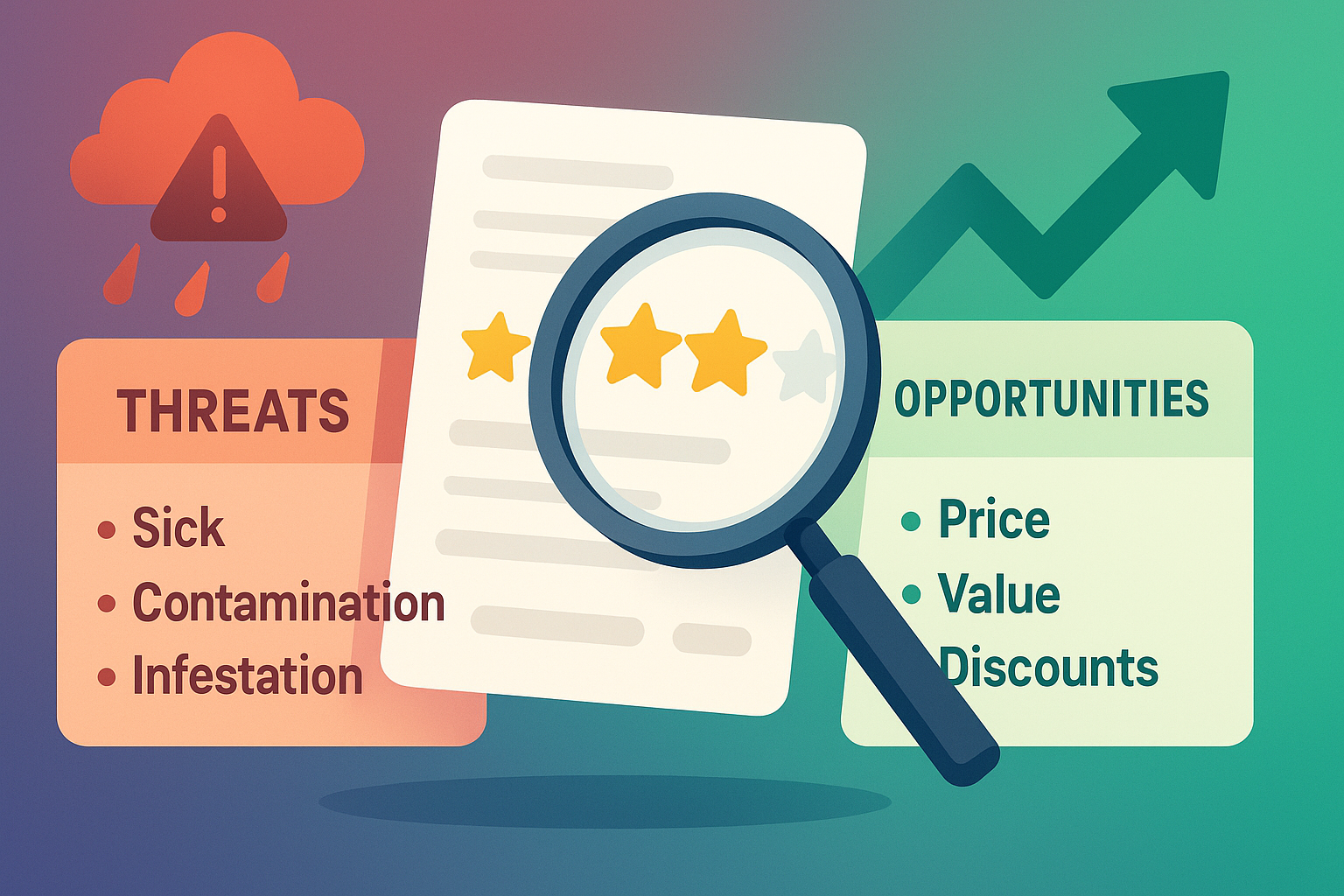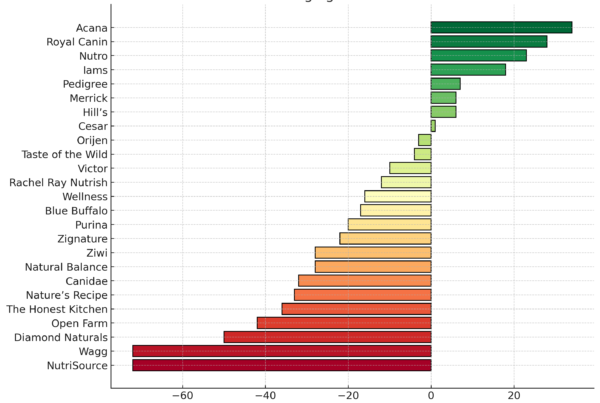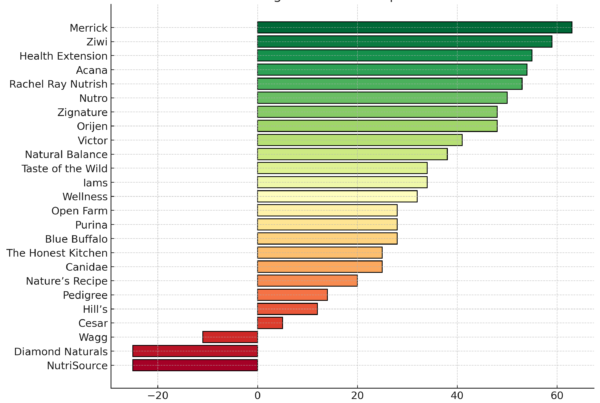For Brand Managers and Quality Assurance Leaders, every day is a balancing act. You’re tasked with protecting your brand from the significant risks buried in negative feedback. At the same time, for Marketing and Revenue Growth Managers, the pressure is on to find and amplify the hidden gems in positive feedback to drive growth and optimize pricing strategy.
The intelligence you need for both missions is right there in your online customer reviews. But the sheer volume makes finding actionable insights feel impossible.
What if you could instantly see a complete, unbiased scorecard of your brand’s performance? What if you could diagnose any problem or validate any strategy in minutes?
To illustrate how this works, let’s walk through a real-world example from the high-stakes pet food industry. While the product is specific, the process and the insights are universal, whether you sell cosmetics, supplements, electronics, or food and beverage products.
Step 1: Your Brand’s Command Center – The Full Picture in Seconds
Before you can act, you need situational awareness. This starts with a high-level command center that shows you the good, the bad, and the ugly, all in one place.
Imagine seeing this dashboard for your product:
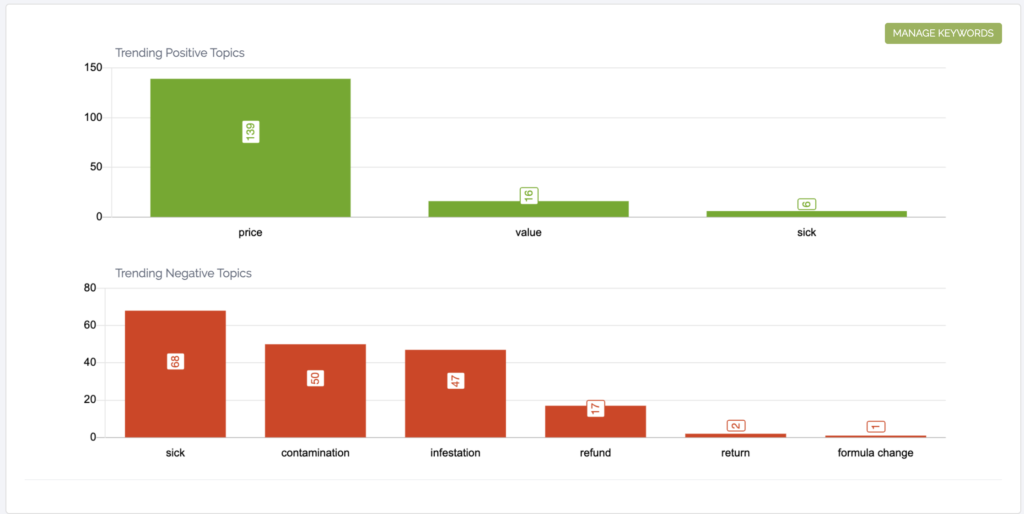
Whether you sell pet food or face cream, this chart immediately tells you a story:
- Your Strengths (Green): You are winning on “price” and “value.” This is the core of your positive customer perception and a critical insight for your marketing and sales teams.
- Your Weaknesses (Red): You have a significant problem with customers reporting products making them “sick,” linked to “contamination” and “infestation.” This is an urgent, code-red threat for your QA and brand reputation teams.
This isn’t just a word cloud; it’s a prioritized action list, telling you exactly where to focus your defensive and offensive efforts.
Step 2: The Deep Dive (Defense) – Diagnosing and Containing Threats
Let’s follow the data and start with defense. The word “sick” is your #1 negative topic. As a QA or Brand leader, you need to know why and when this started, and you need to know now. A single click on that keyword provides an instant diagnostic report.
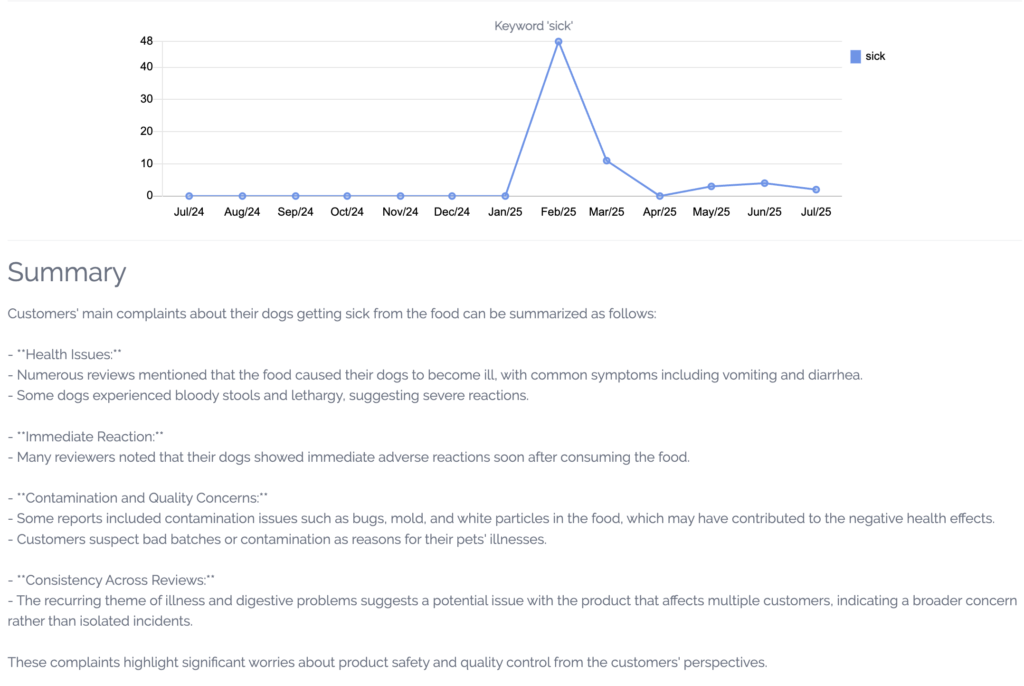
The story behind the crisis is immediately clear:
- The “When”: The line graph shows the problem exploded in February, pointing to a specific, recent cause.
- The “Why”: The AI-powered summary is devastatingly specific. Customers are reporting severe symptoms and explicitly suspect “bad batches or contamination” due to finding “bugs, mold, and white particles.”
While the details here are from the pet food industry, the diagnostic process is universal.
- For a cosmetics brand, your “code red” keywords might be “rash,” “breakout,” or “allergic reaction.”
- For a supplement company, they could be “headache,” “nausea,” or “doesn’t work.”
- For an electronics company, they might be “overheating,” “won’t charge,” or “crashes.”
The result is the same: in minutes, you have a data-backed brief to escalate the issue with precision, containing the problem before it spirals out of control.
Step 3: The Deep Dive (Offense) – Uncovering Your Competitive Edge
While the QA team handles the threat, your commercial teams can go on the offensive. Your dashboard showed “price” is your biggest strength. This is more than a vanity metric; it’s a strategic lever.
This is a goldmine for a Brand Manager, but for a Revenue Growth Manager or a Commercial Strategy Lead, this dashboard is the entire playbook. A single click reveals a detailed analysis of your pricing power:
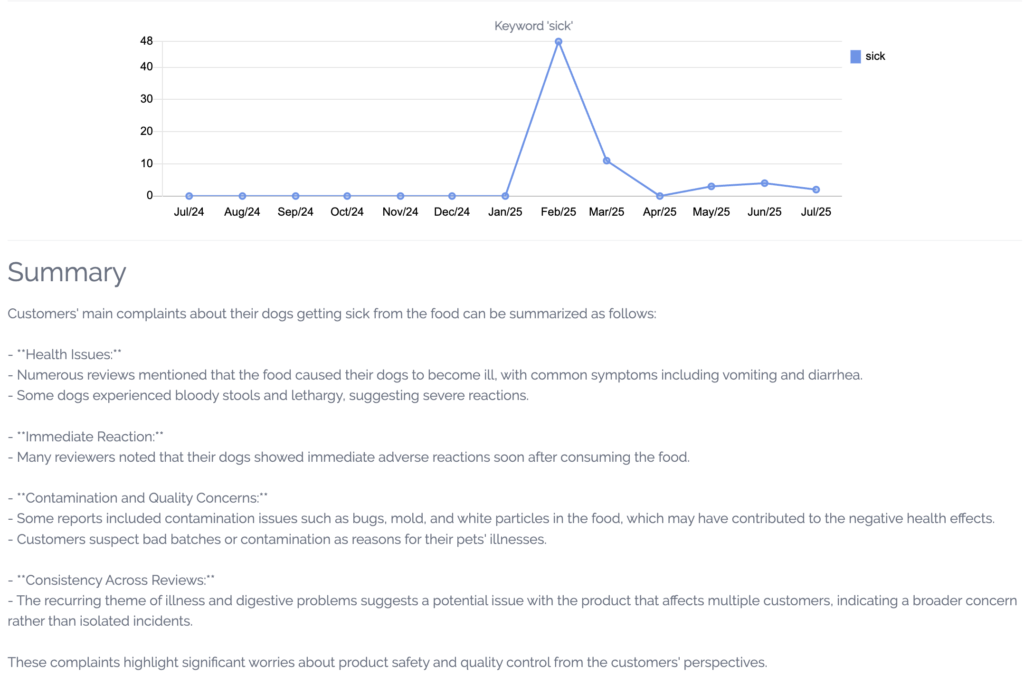
This AI-powered summary provides a multi-faceted view of your pricing strategy’s success:
- Validate Pricing & Inform Marketing: The report confirms your “reasonable and affordable” pricing is resonating. This language can be used directly in marketing copy to reinforce your core value proposition.
- Arm Your Sales & Commercial Teams: The insight that customers find your product more cost-effective than those at major retailers like Walmart is a powerful selling point your sales team can use to win new accounts.
- Optimize Promotional Spend: The specific appreciation for “discounts,” “promotions,” and “subscription prices” gives you the data you need to justify and optimize your promotional calendar, ensuring you’re spending money on tactics that customers actually value.
This isn’t just feedback. It’s on-demand market research telling you how to price, promote, and position your product to win.
The Business Impact: A Unified Strategy for Growth and Protection
By integrating this dual-sided analysis into your workflow, you create a unified strategy that drives tangible business outcomes across departments.
- Protect Brand Equity: Get ahead of safety and quality issues before they damage customer trust and require costly interventions.
- Drive Revenue Strategy: Use real-world customer feedback to fine-tune pricing, optimize promotional spend, and build a powerful case for your commercial strategy.
- Increase Operational Efficiency: Save hundreds of hours of manual analysis, freeing up your most valuable team members to focus on solving problems and pursuing opportunities.
- Foster Data-Driven Collaboration: Provide a single source of truth that Brand, QA, Marketing, and Revenue teams can use to make collaborative, evidence-based decisions.
Your Customers Are Showing You the Way
Your online reviews are the most honest and immediate feedback you will ever receive. They contain clear warnings about your most dangerous risks and a clear roadmap to your most promising opportunities. The challenge isn’t a lack of data; it’s the lack of an efficient way to analyze it.
With the right tools, you can move beyond guessing and finally gain the clarity to protect your brand and accelerate its growth, all from one place.
Stop letting critical insights get buried in your reviews. See Reviews.AI in Action. Schedule a personalized demo today and we’ll show you how to diagnose your own customer feedback.

